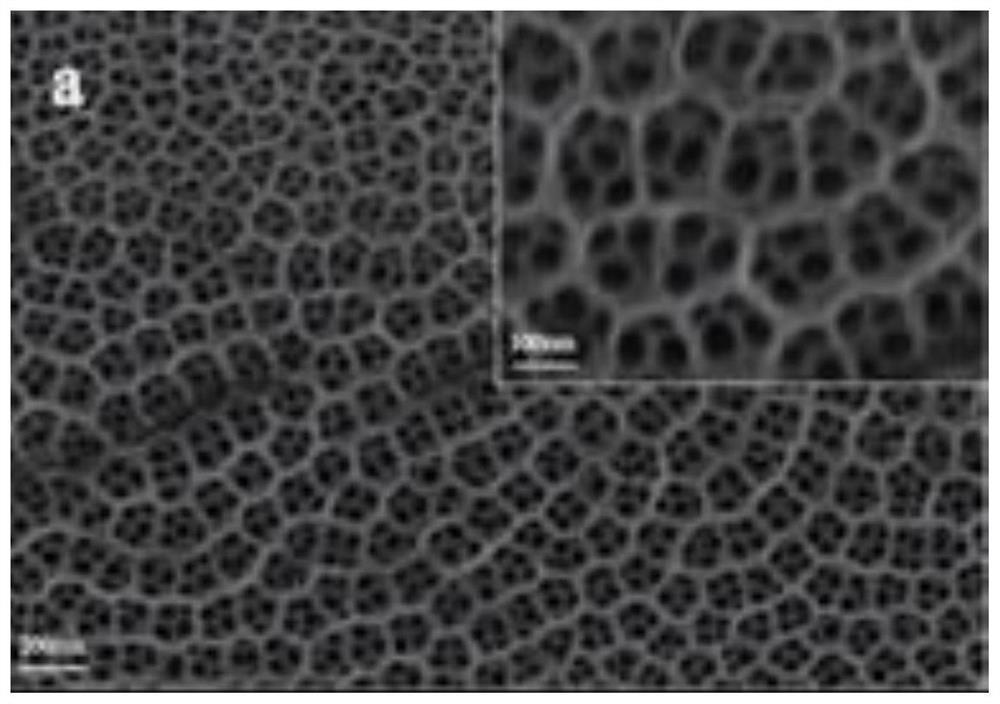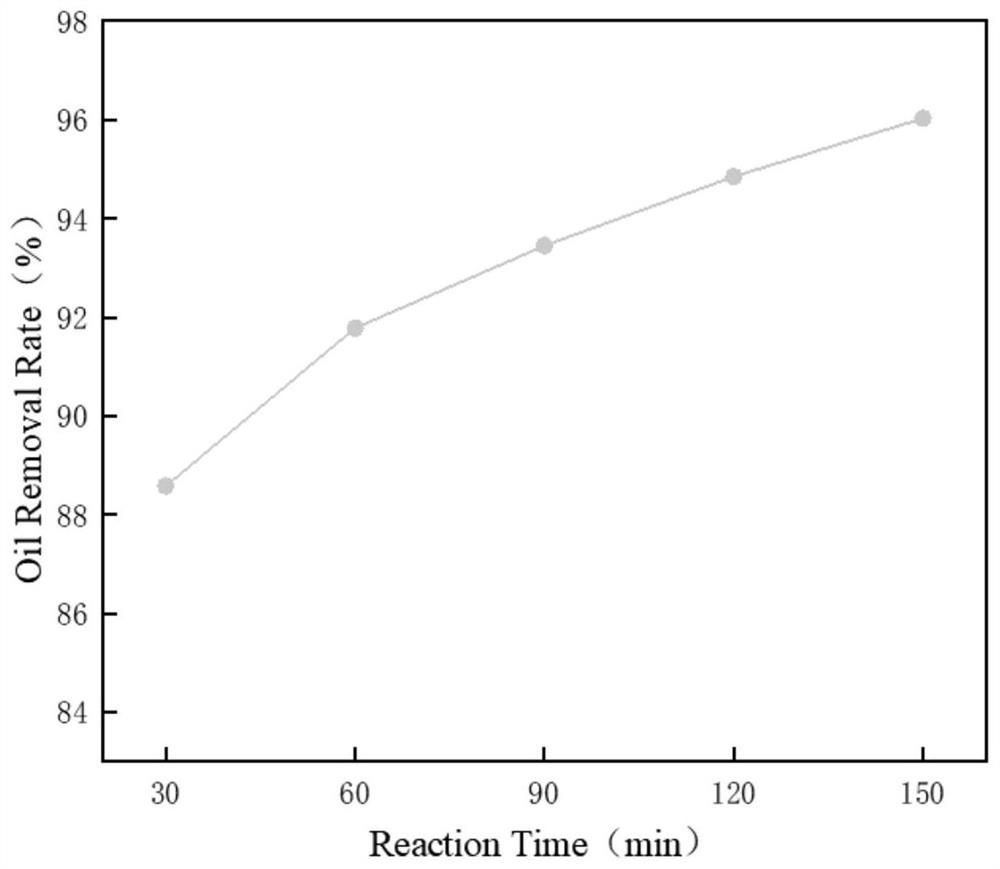Method for treating oily sewage through solar STEP light-heat-electricity coupling
A solar energy and electrical coupling technology, applied in the direction of light water/sewage treatment, metallurgical wastewater treatment, water/sewage treatment, etc., can solve the problems of low industrialization, low efficiency and immaturity of oily sewage, etc., to improve utilization efficiency, excellent Conductivity, photocatalysis, and efficient oxidation effects
- Summary
- Abstract
- Description
- Claims
- Application Information
AI Technical Summary
Problems solved by technology
Method used
Image
Examples
Embodiment 1
[0094] The initial concentration of oil in the oily sewage in the electrolysis cell is 500 mg / L. Before galvanostatic electrolysis, graphene oxide is added and reduced to the oily sewage and stirred and mixed for 30min to make the reaction system reach adsorption-desorption equilibrium; wherein, the oily sewage The concentration of reduced graphene oxide was 0.08 mg / mL.
[0095] The temperature of the electrolytic cell is raised to 70°C by using the thermal energy provided by the solar concentrator, and at the same time, the electric energy provided by the solar photovoltaic module is used to energize the electrolytic cell, and the current is 70 mA, and the electrolytic cell is illuminated. The sewage was electrolytically oxidized for 120 minutes. The electrolytic oxidation adopts a two-electrode system, the cathode is platinum electrode and the anode is TiO 2 Nanotube electrodes, the electrode area is 20 × 20mm, and the electrode spacing is 13mm.
[0096] After testing, it ...
Embodiment 2 to Embodiment 5
[0098] Examples 2 to 5 are basically the same as Example 1, except that the electrolysis time is 30min, 60min, 90min, and 150min, respectively.
[0099] Depend on image 3 and Figure 4 It can be seen that the oil content removal rate and the change rate of COD removal rate both increase with the increase of time. In the early stage of electrolysis, the degradable substances in the water are continuously oxidized on the photoelectrode, so the COD and oil content change rapidly. With the increase of time, all the degradable substances in the water are oxidized, leaving some substances that are not easily oxidized. As the oil content decreases, the reaction rate decreases. In addition, the reduced graphene is loose and porous, and has strong adsorption capacity. The oxygen-containing functional groups of its own structure can oxidize and decompose organic substances in water. The excellent photocatalytic performance synergizes with increased photocatalytic oxidation performanc...
Embodiment 6 to Embodiment 10
[0101] Examples 6 to 10 are basically the same as Example 1, except that the electrolysis temperatures are 20°C, 30°C, 50°C, 70°C, and 90°C, respectively.
[0102] Depend on Figure 5 and Image 6 It can be seen that when RGO is added to the system, the oil content removal rate and COD removal rate both increase significantly with the increase of temperature, indicating that RGO has an obvious enhancement effect on the photocatalytic oxidation degradation of oily wastewater. RGO has a strong adsorption effect in the solution. When the oil is still in the water phase, it has been oxidized or adsorbed, so the good effect of double reduction of chemical oxygen demand and oil content is achieved. Since the oxidative degradation of oily sewage is an endothermic reaction, the higher the temperature, the more favorable the positive reaction and the faster the reaction speed. Increasing the temperature increases the number of activated molecules, and the random movement of molecules...
PUM
| Property | Measurement | Unit |
|---|---|---|
| thickness | aaaaa | aaaaa |
Abstract
Description
Claims
Application Information
 Login to View More
Login to View More - R&D
- Intellectual Property
- Life Sciences
- Materials
- Tech Scout
- Unparalleled Data Quality
- Higher Quality Content
- 60% Fewer Hallucinations
Browse by: Latest US Patents, China's latest patents, Technical Efficacy Thesaurus, Application Domain, Technology Topic, Popular Technical Reports.
© 2025 PatSnap. All rights reserved.Legal|Privacy policy|Modern Slavery Act Transparency Statement|Sitemap|About US| Contact US: help@patsnap.com



